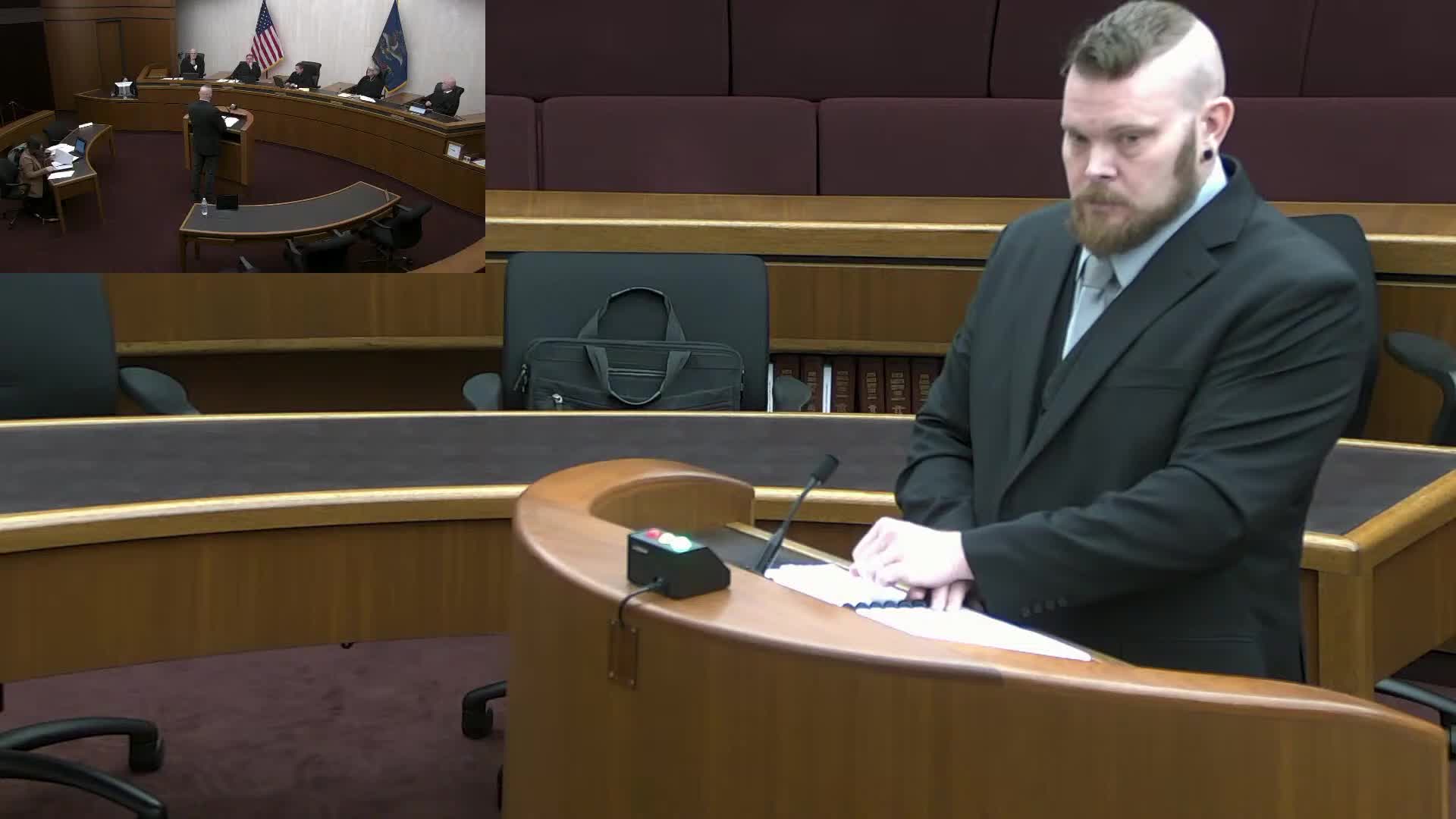Court rules hearsay objection valid halting witness testimony in Dryslerk case
January 11, 2025 | Supreme Court , State Agencies, Organizations, Executive, North Dakota
This article was created by AI summarizing key points discussed. AI makes mistakes, so for full details and context, please refer to the video of the full meeting. Please report any errors so we can fix them. Report an error »

In a recent session of the North Dakota Supreme Court, a pivotal moment unfolded as the justices navigated the complexities of hearsay evidence during the case of State v. Ruot. The atmosphere was charged with anticipation as attorneys presented their arguments, each seeking clarity on the admissibility of certain testimonies.
The discussion took a significant turn when Mister Dryslerk, representing the defense, raised an objection regarding the testimony of a witness. The court, after careful consideration, sustained the objection on the grounds of hearsay. This ruling was notable, as it highlighted the court's commitment to ensuring that only reliable evidence is presented in court. The state, acknowledging the court's decision, instructed its witness to refrain from discussing the contested topic further.
In a moment of collaboration, the defense attorney was asked if he was satisfied with the court's ruling. His affirmative response underscored a rare instance of agreement between the opposing sides, reflecting a shared understanding of the legal principles at play.
As the session progressed, the implications of this ruling became clear. The court's strict adherence to hearsay rules not only shapes the current case but also sets a precedent for future trials, emphasizing the importance of credible evidence in the judicial process. This decision serves as a reminder of the delicate balance between legal strategy and the pursuit of justice, leaving observers eager to see how it will influence the ongoing proceedings in North Dakota's legal landscape.
The discussion took a significant turn when Mister Dryslerk, representing the defense, raised an objection regarding the testimony of a witness. The court, after careful consideration, sustained the objection on the grounds of hearsay. This ruling was notable, as it highlighted the court's commitment to ensuring that only reliable evidence is presented in court. The state, acknowledging the court's decision, instructed its witness to refrain from discussing the contested topic further.
In a moment of collaboration, the defense attorney was asked if he was satisfied with the court's ruling. His affirmative response underscored a rare instance of agreement between the opposing sides, reflecting a shared understanding of the legal principles at play.
As the session progressed, the implications of this ruling became clear. The court's strict adherence to hearsay rules not only shapes the current case but also sets a precedent for future trials, emphasizing the importance of credible evidence in the judicial process. This decision serves as a reminder of the delicate balance between legal strategy and the pursuit of justice, leaving observers eager to see how it will influence the ongoing proceedings in North Dakota's legal landscape.
View full meeting
This article is based on a recent meeting—watch the full video and explore the complete transcript for deeper insights into the discussion.
View full meeting
